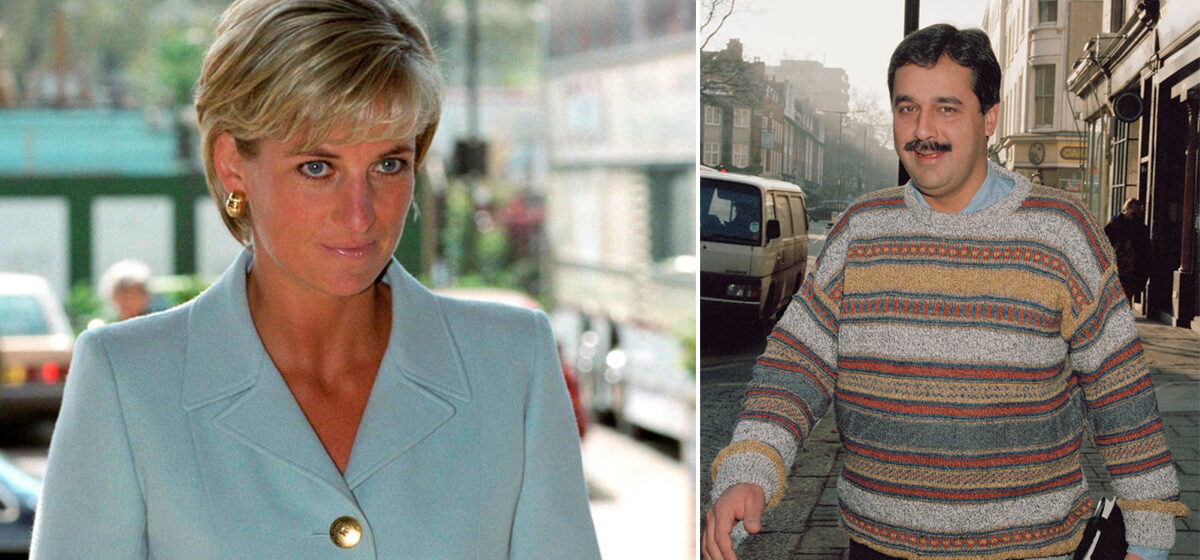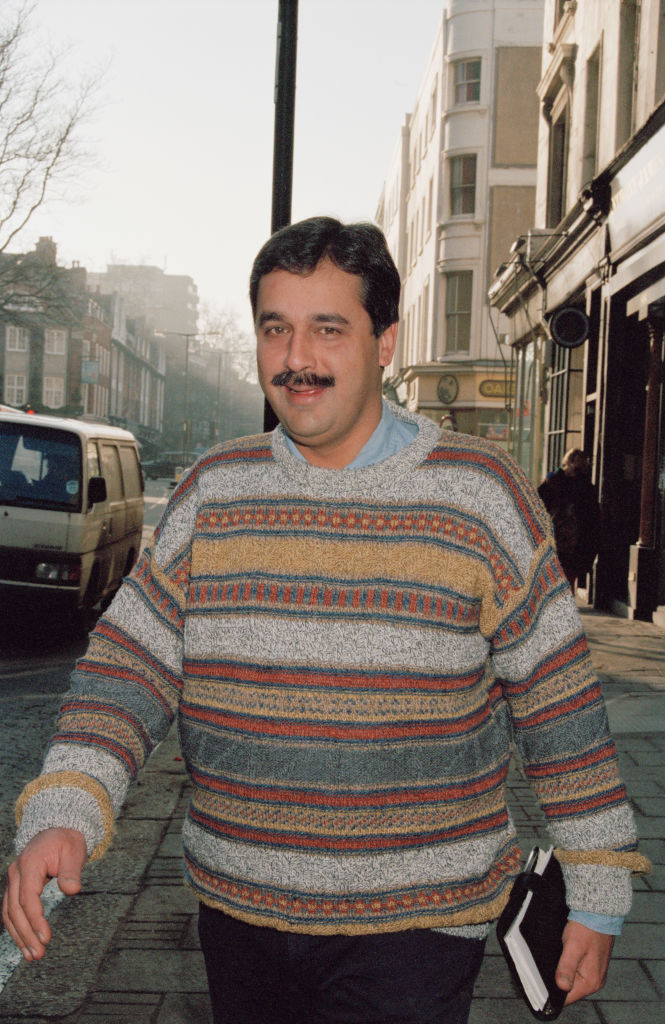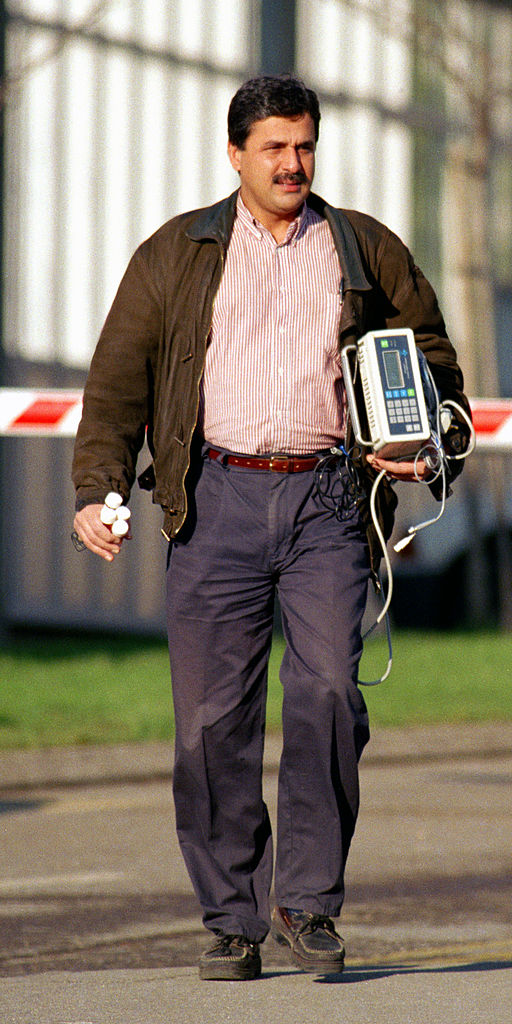Celine Dion is giving fans an honest look at her life with stiff person syndrome.
In a new documentary, the famous singer experiences a scary medical crisis during a physical therapy session, and it’s all caught on camera.
In 2022, Dion revealed she had been diagnosed with stiff person syndrome. In the documentary, “I Am: Celine Dion,” she shares that she had been dealing with symptoms of this rare, progressive neurological disorder for 17 years.
“I need my instrument. And my instrument was not working. So we started to elevate the medicine,” Dion, 56, said after struggling to hit certain notes during her 2018 and 2019 tours.
Though she completed her 2018 tour, Dion had to postpone several dates from her 2019 tour due to the “common cold” before the pandemic shut it down.
Her tour resumed in 2022, but she had to keep canceling and rescheduling shows. It wasn’t until she announced her diagnosis that she officially canceled the rest of her appearances.
“I can’t lie anymore,” Dion says in the documentary. “From a sinus infection to an ear infection to whatever. Sometimes I would point my microphone toward the audience, and I would make them sing it. There are moments where I cheated and I tapped on the microphone like it was the microphone’s fault.”

LONDON, ENGLAND – JULY 05: Celine Dion performs live at Barclaycard Presents British Summer Time Hyde Park at Hyde Park on July 05, 2019 in London, England. (Photo by Samir Hussein/Redferns)
In the documentary, there’s a part where Dion shows a very personal moment. She’s lying on a massage table doing exercises for her physical therapy when her foot suddenly starts to cramp. Soon after, her whole body tightens up and she can’t move or talk to the people around her.
The camera keeps recording as another person from her medical team rushes in with a nasal spray called benzodiazepine. They give it to Dion, who’s in so much pain that she’s crying, even though she can’t move. It’s really hard to watch this part of the video.

Once the spasms have subsided – they typically last anywhere from 30 minutes to an hour – Dion is able to sit up and speak.
“Every time something like this happens, it makes me feel so embarrassed,” she says. “I don’t know how to express it, you know, to not have control over yourself.”
Her physical therapist speculates the attack was brought on by being “overstimulated” from an earlier singing session.
“If I can’t get stimulated by what I love, then I’m going to go on stage, and you’re going to put the pulse oximeter on me and turn me on my back?” she wonders.
Dion hopes that one day soon she’ll be able to return to the stage.
Inside the love story of Hasnat Khan and Princess Diana

Princess Diana was known for her heartfelt visits to hospitals, where she brought joy and hope to those in need.
However, one visit turned into something far more — a passionate love affair that remained shrouded in secrecy for years.
It’s 1995 – just two months prior to the infamous Panorama interview that would forever alter Diana’s life. You might remember that interview, when Princess Diana came clean about her struggles with mental health and the trials of her marriage, capturing the world’s empathy.
Two months before that interview, Diana crossed paths with a handsome doctor, a Muslim whose dark good looks were compared to the charming actor Omar Sharif.
The dashing heart surgeon, Dr. Hasnat Khan, worked at the Royal Brompton Hospital in London. But how did this unlikely pair end up together?

Well, that’s because Joe Toffolo, the patient who underwent surgery, was married to Oonagh Shanley-Toffolo, an Irish nun and acupuncturist who was a close confidante of Princess Diana.
After the initial visit, Diana returned to the hospital almost daily for three weeks, eager to pursue the handsome surgeon. The connection was electric.
Smoked cigarettes and loved KFC
Today, when we look back at countless photos of Diana visiting the hospital, it’s officially stated that she went to cheer up sick children or raise awareness for cystic fibrosis.
That’s definitely true. However, she also had personal reasons. Beneath the surface, her motivations were deeply personal. Because at 35, Diana had discovered a reason to smile once more.

(Photo by Stan Karczmarz/Sygma via Getty Images)
When Diana and Khan started seeing each other, it marked Diana’s most serious involvement since her separation from Prince Charles three years earlier.
But it came shrouded in secrecy. Few knew about their budding romance, a bond that seemed improbable at first glance. Dr. Khan, then 37, was a heart surgeon
that was running fat and smoked a pack of cigarettes a day,
He had penchant for late-night jazz clubs and Kentucky Fried Chicken — an unconventional match for the Princess of Wales.
But this didn’t stop Diana.
”He’s drop-dead gorgeous,” Diana reportedly told Oonagh Toffolo.
Secret messages
To keep their love under wraps, Diana cleverly disguised her messages for Khan, using the alias ”Dr. Armani.” They met in secret, often in unconventional spots to avoid prying eyes.
On one occasion, Diana donned a black wig to sneak into Ronnie Scott’s, a famous jazz club in Soho. In another instance, Khan hid in the boot of a car to slip into Kensington Palace, aided by Diana’s loyal butler, Paul Burrell.
Their romance flourished even during casual outings.

One day, when Diana was feeling low, Khan whisked her away to a pub near Harefield Hospital where he had worked. The name? The Prince of Wales.
”She thought it was hilarious,” he recalled with a chuckle.
Diana was so enamored that she even asked her butler to find a priest who could marry them, despite Khan’s Muslim faith. Their love deepened as they spent time together, sharing laughter and discovering each other’s worlds.
Diana reportedly read books on Islam and cherished a photograph of “my dishy doctor.” She even visited Khan’s family in Lahore, Pakistan, where she embraced their culture and enjoyed a delightful afternoon tea.
Met William and Harry
This whirlwind romance took a more serious turn when Diana introduced Khan to her sons, William and Harry.
She described him as “Mr. Wonderful” and, according to her butler Burrell, she referred to Khan as her soulmate. Friends of Diana stated that he was ”the love of her life” and that she expressed distress when their relationship ended.
Yet, as love stories often go, their fairytale faced obstacles.

The mounting pressure from the media began to take a toll on their relationship. While Diana was accustomed to the limelight, for Khan, the intense scrutiny was daunting.
He feared that pursuing their relationship publicly could jeopardize his career.
They discussed possible solutions, including moving to Pakistan — a plan that nearly came to fruition. Talks of relocating to Australia or South Africa were also on the table, but nothing materialized. According to The Guardian, Diana’s desire for public acknowledgment clashed with Khan’s reluctance, leading to a heartbreaking conclusion: the romance ended in July 1997.
Khan finds out about Dodi
Just a month later, tragedy struck. In the early hours of August 31, 1997, Diana died in a car crash in Paris, alongside her partner Dodi Fayed and their driver, Henri Paul.
Khan was blindsided by the news of Diana’s relationship with Dodi, discovering it only after it became public. ”When I found out, I was really mad; mad as hell,” he confessed in a 2012 interview.
Khan attended her funeral at Westminster Abbey.

The shadow of her tragic death looms over him still. “Sometimes I feel like screaming,” Khan shared, reflecting on the emotional turmoil. “There have been very bad times. I have moved on, but it keeps coming back.”
Despite the heartbreak, Khan fondly remembers Diana: ”We all have our drawbacks, but I found her a very normal person with great qualities and some personal drawbacks, like bad habits.”
Hasnat Khan today
In 2006, Khan married Hadia Sher Ali, a 28-year-old woman descended from Afghan royalty, but the couple divorced two years later.
He now lives in the UK, continuing his work as a heart surgeon and engaging in humanitarian efforts in Pakistan and Saudi Arabia.
Reflecting on his life, Khan shared: ”It is very good to be home. I am quite relieved to be home. My blood pressure is stable—I go fishing, I go for walks. It feels like a sanctuary. It’s very peaceful.”
Though the romance between Princess Diana and Dr. Hasnat Khan was short-lived, it remains an interesting chapter in her life, a testament to the complexity of love in the face of royal duty and public scrutiny.
As we remember the Princess, we celebrate not just her legacy, but also the love she shared with a man who saw her for who she truly was—a normal person with extraordinary qualities.



Leave a Reply